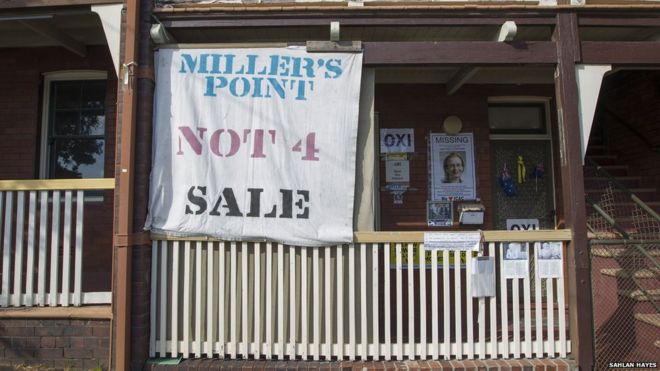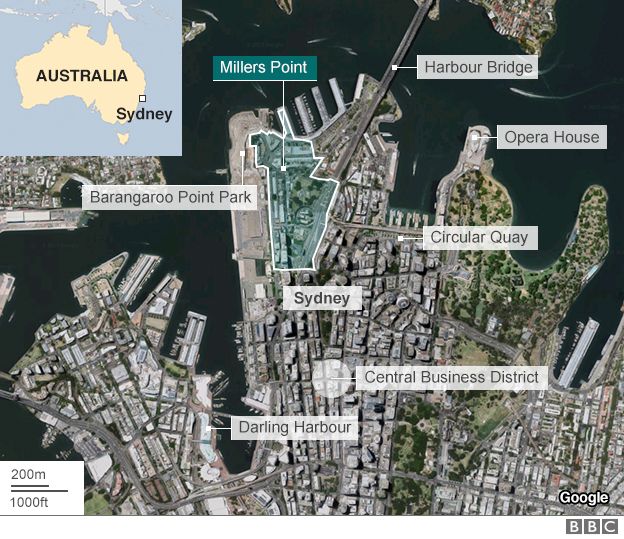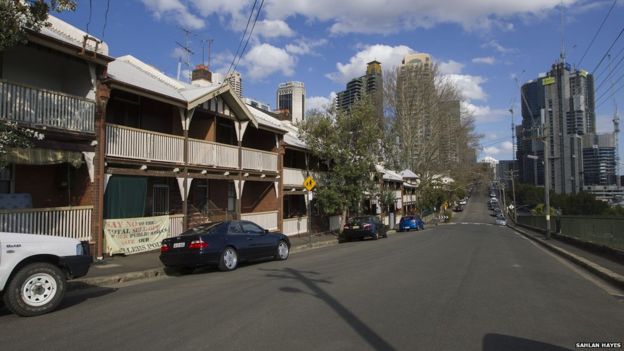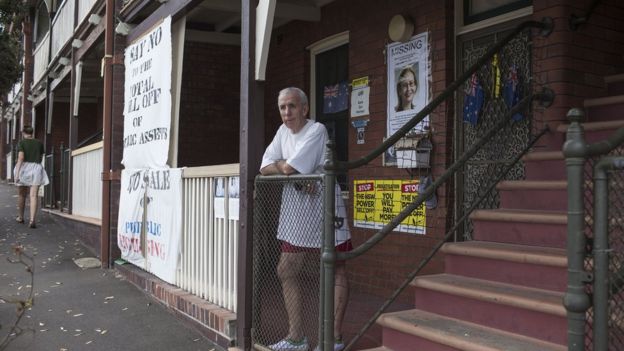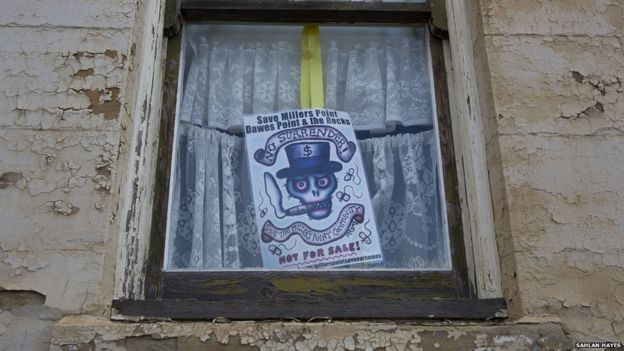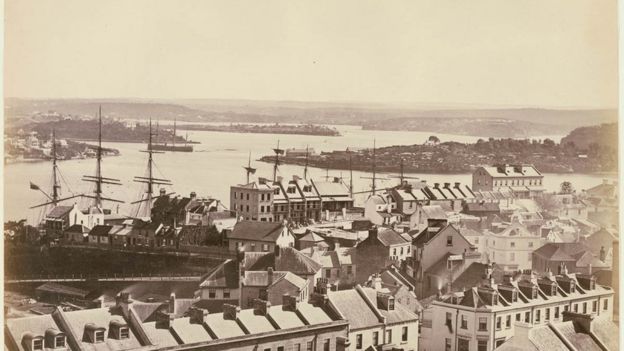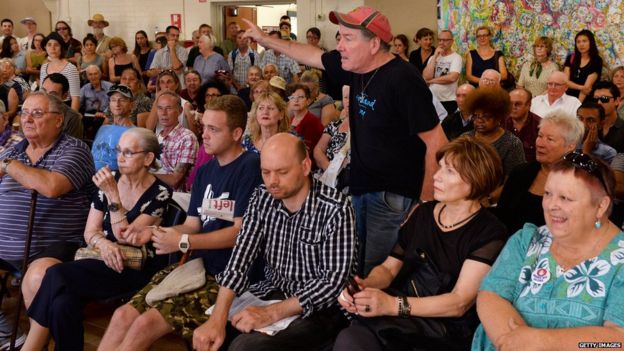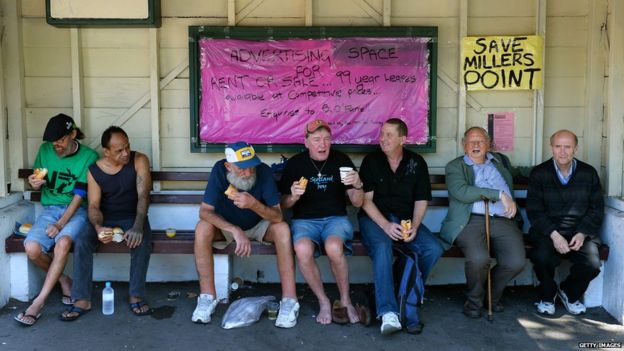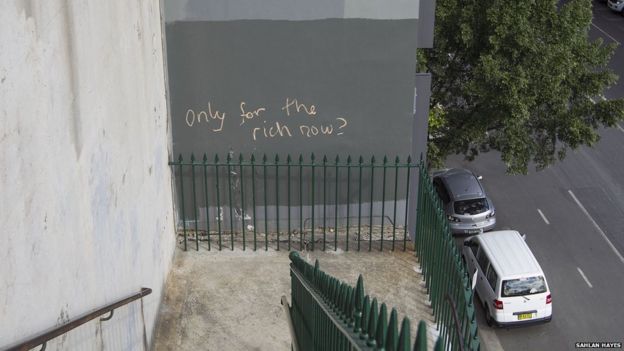August 5, 2015 Elizabeth Farrelly
 |
| Illustration: Rocco Fazzari. |
Australians. We flatter ourselves as larrikins, carousing like noble loons across the culture-scape but, actually, we're tame as. We think we're individuated and diverse but, in fact, we're staggeringly conformist. We imagine ourselves so "out there" but are, in fact, so quiet. Ssh. Sleeping here.
Take Sydney's current development boom. You don't hear much about it. Mostly what you hear is housing shortage, desperate need, just build it. But the consequent boom, with an anticipated $30-$40 billion 10-year development spend in the city alone, is probably the biggest ever. Demand and supply are both intense – queueing renters and rocketing prices, cranes and noise and dust.
You might expect such market euphoria to produce an equal exuberance of product, a wild sushi-train of choice, sized, cut and garnished to every nuance of need and taste. But a simple Saturday stroll around the latest show homes demonstrates one overwhelming fact. Across the land, from Blacktown to Dover Heights, the new Sydney dwelling is exactly – weirdly – the same.
It's as though one pencil – one design-mind – were behind the lot. And in a way that's true.
Advertisement
Look at last week's makeover proposal for the Sirius building in the Rocks. This fine building, designed in 1978 by Tao Gofers for the Government Architect, is a rare Sydney instance of mid-century Brutalism. The makeover, by Chris Bosse for the developer lobby-group Urban Taskforce, purports to "save" it but is actually worse than demolition. Bosse is a fine architect, but the scheme is an insult.
You may not like the Sirius. That's OK. Brutalism is an acquired taste – and that's the problem. No-one bothers to acquire taste any more. These days, you like it or you don't. Being an acquired taste is the kiss of death. Race you to the bottom.
But Brutalism should not be so lightly dismissed. Key fact: Brutalism is not brutal. Its manifesto – articulated in
The New Brutalism (1966) by to-die-for writer Reyner Banham – shows a style striving for heightened contrast, material authenticity, compositional verve and intellectual control.
My personal genre faves are Howell Killick and Partridge's gloriously textural 1956 terraces at Hampstead Heath, Atelier 5's coolly concrete Seidlung Halen housing in Berne (1961) and Le Corbusier's disciplined theatrics at Maisons Jaoul at Neuilly, Paris (1956).
All exhibit a delicate equipoise between solid and transparency, order and disorder, discipline and play. But above all, they show a mastery of light, finessing its fall across texture, material and form.
Sydney had few Brutalist buildings; now it has fewer. The best was the State Office Block, in which Premier Robert Askin effectively sacked Jorn Utzon. Designed by Ken Woolley in 1964, it skilfully juxtaposed glass, concrete and bronze with a naivety and sophistication worthy of the Japanese. But the government flogged it, Lend Lease demolished it and now instead we have Renzo Piano's Aurora Place, 1997. At least it's lovely.
Bosse's defacing of the Sirius is a less good deal. Bosse has form in re-facing Brutalism. A previous scheme wrapped UTS' much maligned tower in slinky white cobwebs; an idea they should devoutly resist. Now it's the Sirius, up for sale or demolition or both by yet another government that gives not a hoot for history, architecture, social housing or city texture.
The Urban Taskforce proposal smooths and sanitises this gruff, square Bauhaus TV stack into a celestial bridal vision in lace and taffeta, all snowy render, anodised glazing and a full clacking set of Gold Coast duckbill balconies.
Saved? It's like saying, "Darling I love you, and if you could just straighten your nose, shorten your thighs and triple your boobs, I'm yours forever."
It isn't just about visuals. It's about the strategic erasure of a textured, varied and responsive world view for one of anonymous blandness. Soon the whole of Sydney will look this way.
The Sirius was designed to rehouse public tenants displaced by demolitions in the Rocks. A rambling 12-storey stack, it was moulded in a way unheard of today, around long interviews with particular tenants, accommodating their needs in a variety of flat-types that ranged from one-to-four-bedroom apartments, split-level units and two and three-storey walk-ups.
These days, we design not for humans but for work-bots sans books or pianos, mess or children; sans strange habits, filthy visitors, unforeseen emotions, weirdnesses, wildness or whims. No departure from the minimum bedroom, quick shower, stand-up marble breakfast, rush to work. Definitely no larrikins.
In today's development paradigm – those zillions of white-gridded glassy soulless things with some fake timber and focus-group names like Ikon, Marq, Sparq, Altitude, Latitude that are spreading like a disease across the metropolis – the mix is determined not by demand but by profit. So it's 90 per cent studios or one-bedders, a few twos and almost nothing that could remotely accommodate a family as proper cities do.
This paradigm comes straight from a 2002 document, the Residential Flat Design Pattern Book – aka The Yellow Book – now the Apartment Design Guide. It was part of a push by Chris Johnson, then government architect, for "design-led planning". Responding to Bob Carr's hatred of Anzac Parade's famous redbrick walk-ups, it wanted everything white and glassy. Oh, and it banned non-architects from designing apartments.
Johnson argued for uniformity. "Just visualise Rome, Paris or Venice," he wrote. "It is the consistency of the buildings that gives these cities their character." He didn't mention the cultivated proportion, generous space, quality build and noble patronage that make those cityscapes feel wonderful. Or that Sydney, by contrast, thrives on diversity.
Have laced up the straitjacket, Johnson jumped fence to head the Urban Taskforce. There, he's done more to accelerate the current boom than any other person: consistently talking up the housing shortage, lobbying for ever-more density, pushing strata reforms to ease demolition, pressing to shrink one-bed minimums from 58sqm to 50sqm. And commissioning the Sirius' wedding shroud.
In cities as in behaviour, our choice is stark: do we want uniformity, preventing the worst but also the best? Or do we want freedom-to-fail, flavour and personality, larrikinism and genius? What's it to be, riotous light-and-dark, or two-and-a-bit tasteful shades of grey?
Read more:
http://www.smh.com.au/comment/weve-lost-our-inner-larrikin-and-bland-is-the-result-20150804-girrs5.html#ixzz3i6I7b8Bz
